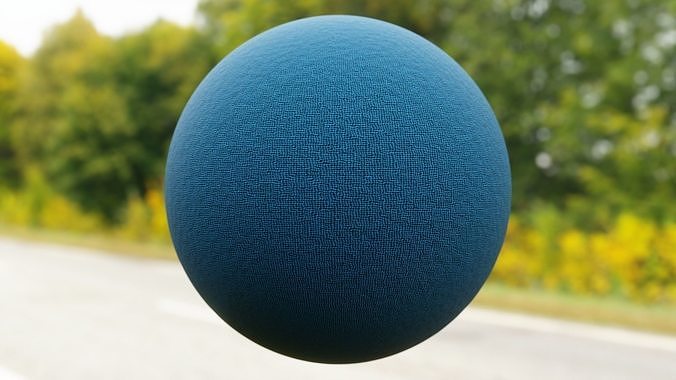
Realistic Procedural Fabric Material - Microfiber Cloth Surface Texture
This Realistic Procedural Fabric Material – Microfiber Cloth Surface is a high-quality, node-based shader crafted entirely within Blender v4.0.2 using the Cycles render engine. The material simulates the dense, tightly woven surface of microfiber fabric—ideal for use in professional 3D projects requiring photorealistic textile detailing. Built without any image textures, this procedural shader offers unlimited resolution, seamless tiling, and complete creative flexibility within Blender's node editor.
Whether you're working on product renders, fashion visualizations, furniture assets, or stylized props, this shader provides a clean and realistic representation of a soft, technical textile surface. With full color control, a clean and subdividable mesh, and modular node organization, it is built to serve both artists and studios looking for efficient, adaptable material solutions. This shader setup ensures consistent high-end results across close-up renders, real-time environments, or offline cinematic productions.
Key Features100% Procedural Shader DesignThe entire fabric material is created using Blender’s internal procedural nodes, without relying on external textures. This ensures truly seamless tiling and enables infinite zoom without pixelation or resolution concerns.
Customizable Fabric ColorThe shader includes an intuitive color input that allows users to instantly adjust the fabric’s base color. This feature supports a wide range of design needs, from realistic textile replication to artistic color experimentation.
Highly Detailed Woven SurfaceThe shader replicates the fine, close-knit surface typical of microfiber cloths. Surface detail includes subtle bump mapping, diffuse scattering, and micro-scale roughness that reacts naturally to lighting in both studio and environment-based scenes.
-
Optimized Demonstration GeometryThe previewed mesh features clean, evenly distributed topology and is structured for accurate shader display, lighting, and displacement. The mesh contains:
- Vertices: 31,746
- Polygons: 31,744
Modular Node GroupingThe shader setup is cleanly labeled and grouped within Blender’s node editor. This allows for easy adjustments, educational use, and fast integration into other material libraries or production templates.
Seamless and ScalableBecause the shader is fully procedural, it scales across any resolution or UV layout without tiling issues or texture stretching. It is ideal for use on both high-resolution close-up shots and large surfaces such as garments, curtains, or upholstery.
Separated and Named Mesh ComponentsThe geometry provided with the shader is separated into logical components, properly named for ease of use, retexturing, or geometry replacement in other projects.
This procedural fabric material is suitable for a wide range of professional and creative use cases, including but not limited to:
- Clothing and fashion concept visualization
- Furniture, sofa, and interior textile rendering
- Game asset surfacing and stylized world-building
- Product mockups and packaging prototypes
- 3D printing previews and material studies
- Architectural visualizations and interior design simulations
- Blender education, tutorials, and procedural shading demonstrations
Its procedural design eliminates the need for UV unwrapping and makes it especially appealing to workflows involving rapid prototyping, asset kit creation, and customizable look development pipelines.
Technical SpecificationsThis shader is developed entirely within Blender version 4.0.2 and is optimized for use with the Cycles render engine. It is fully procedural, requiring no external textures or UV unwrapping. The node structure is editable, modular, and labeled for ease of customization. Seamless tiling is fully supported, allowing the shader to be used across large or complex surfaces without visible repetition. The color system is built into the shader and can be adjusted using a simple node input, making it adaptable to various artistic and commercial requirements. The included geometry is cleanly modeled with proper topology for accurate previewing and rendering. While the material is native to Blender, additional formats such as FBX, OBJ, and STL are provided for mesh transfer, though the shader functions are exclusive to the .blend file.
File Formats IncludedThe download package is delivered as a compressed ZIP file containing:
- .blend – Native Blender file with complete shader setup
- .fbx – Exported mesh only
- .obj – Exported mesh only
- .stl – Exported mesh only (for 3D print or static previews)
Please note that only the .blend file contains the fully functional procedural shader. Other formats are provided for preview or mesh use in external software.
Educational ResourceFor users who wish to understand how this shader was created, a complete breakdown and tutorial is available on the creator’s official YouTube channel. The tutorial explains the step-by-step node setup process and best practices for procedural shader development.Visit: [youtube.com/@cgidevesh](https://youtube.com/@cgidevesh)
Final NoteThis microfiber fabric shader is ideal for professionals, educators, and digital creators seeking a lightweight, customizable, and resolution-independent material solution. By eliminating the need for image textures and manual UV mapping, it simplifies your workflow while delivering clean, high-quality surface realism. Its adaptability across multiple project types makes it a valuable asset for any 3D artist's material library.
Download NowBring your 3D models to life with this advanced procedural fabric shader. Add visual depth, professional textile detail, and color flexibility to your scenes—all without relying on external textures. Download today and enhance your rendering pipeline with precision-crafted surface realism.










